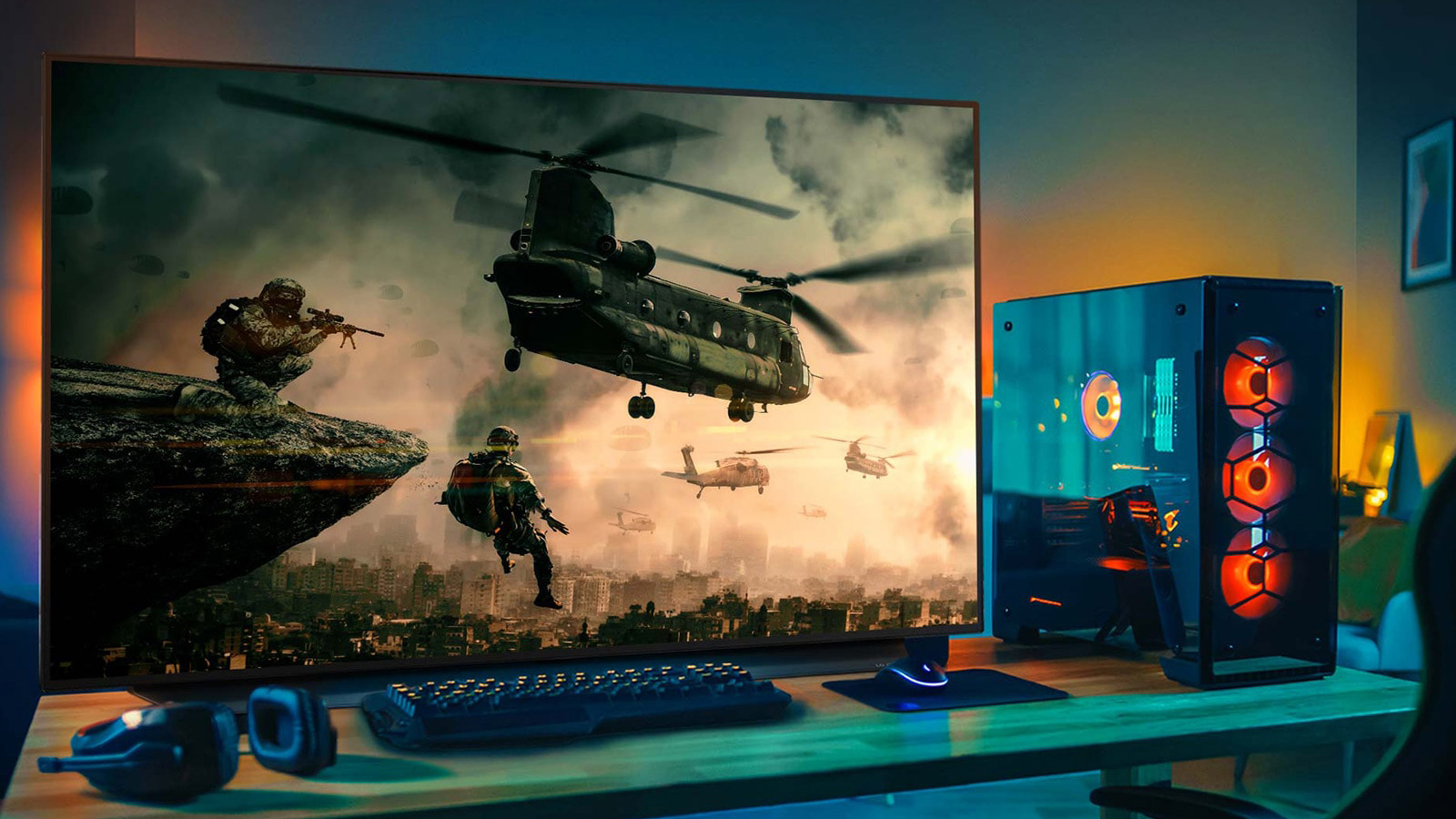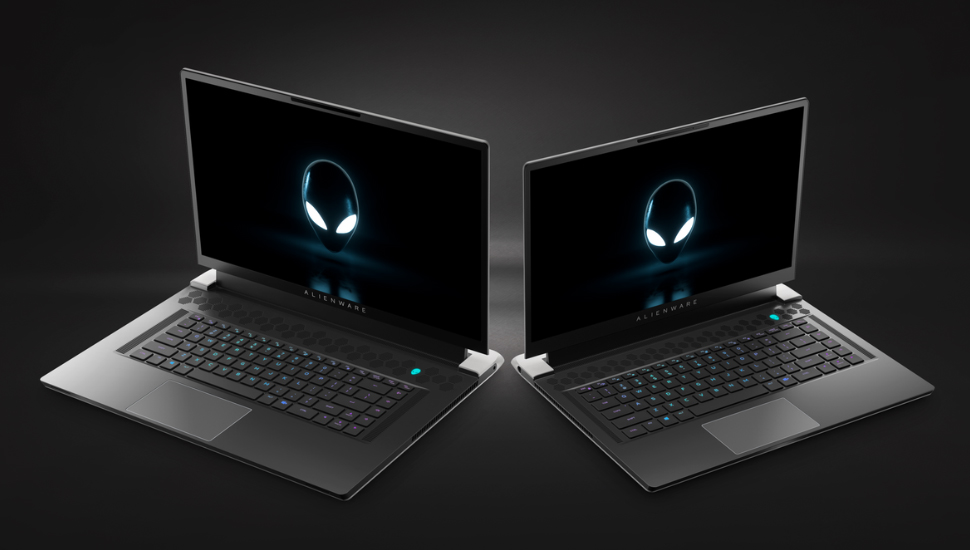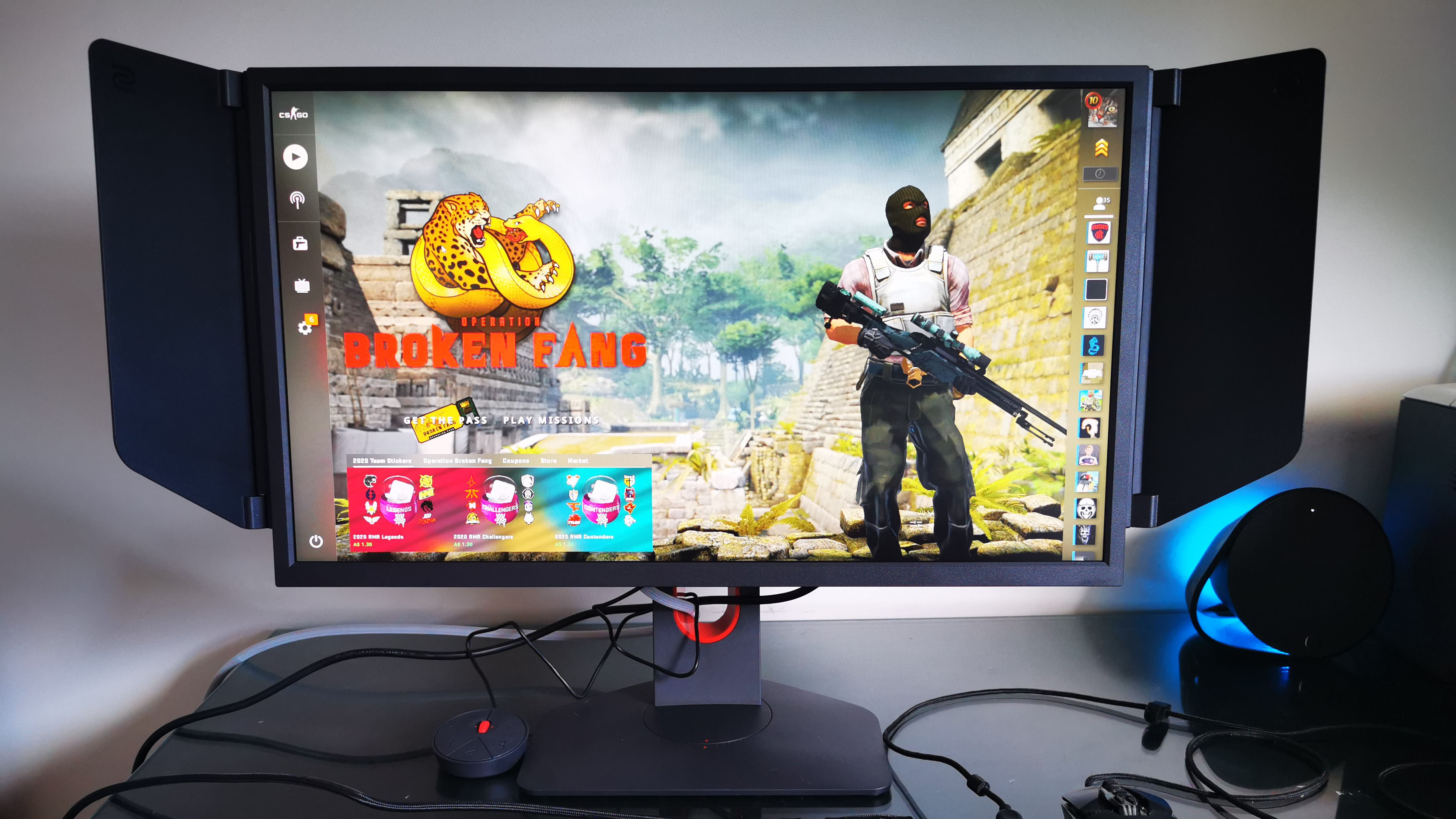What is response time? Input lag and monitor speed explained
Response times are important – here's what you need to know

For PC monitors and smart TVs, speed largely comes down to pixel response and input lag. They’re both measured in milliseconds, and they’re at least a little interrelated – but they’re not the same thing at all.
First let’s establish the basics. In simple terms, response time (or 'pixel response') describes the time taken for a display to change the colour of any given pixel, millions of which make up the overall image. Really broadly, pixel response is all about the look of a display. With a fast response time, moving images will be sharp and clear as opposed to blurry and smeared.
As for input lag, that’s a measure of the delay between signal output from a source device, such as a games console, set top box or PC, and the video image being shown on the display. And it’s all about feel. Does the screen respond quickly to your control inputs in a game? If it does, it has low lag or latency. If there’s a noticeable delay between wiggling a mouse or control pad and on-screen movement, then it probably suffers from significant lag.
Anyway, response and lag don’t apply in quite the same way to all display and panel types, be that OLED vs LCD or TVs and PC monitors (note that TVs and other screens marketed as ‘LED’ are typically LCD panels with LED backlights, not actually LED panels).
- Just want a good low-lag screen? Check out the best gaming monitors and best 120Hz TVs
What is response time?
How is response time / pixel response measured and what do the numbers really mean? The most common metric of pixel response is known as grey-to-grey, sometimes abbreviated to GtG. As the name implies, it’s not a measure of the time taken for a pixel to fully transition from off to on or from black to white. Instead, GtG pixel response records the time taken to move between two intermediate colors.
What’s more, the industry standard VESA method for measuring GtG response doesn’t even record the full time taken for that intermediate transition. It actually discards the first 10% and last 10% of the transition, recording only the time taken for the middle 80%.
There are good historical reasons for that approach, including difficulties in measuring precisely when a screen hits 100 percent of the target color. But the snag, especially for LCD technology, is that the beginning and particularly the end of the color transition can take longer than that middle 80%.
Sign up for breaking news, reviews, opinion, top tech deals, and more.

Shown on a graph, the pixel response of an LCD panel follows an ‘S’ curve, with a slightly sluggish immediate response, followed by that rapid middle phase, before response tails off dramatically towards the end of the transition. The net result is the time taken to fully transition from one color to another can be dramatically longer than the quoted GtG response.
There is another measure of pixel response known as MPRT or ‘moving picture response time’. It’s intended to be a better measure of actual perceived blurring based on the abilities of the human eye.
In theory, MPRT response is a direct function of refresh rate. So, a refresh rate of 1000Hz is required to achieve a 1ms MPRT pixel response. However, mitigating measures including black-frame insertion or strobing backlights can improve MPRT response to below the refresh rate of the panel and to the point where it’s typically faster than a screen’s GtG response, at least in terms of quoted specifications.
That achievement, however, comes with several caveats. For starters, those mitigating measures usually don’t work when variable refresh rate or frame synching is enabled. Moreover, screen modes intended to improve MPRT response tend to reduce vibrancy and visual punch. So, it’s often not possible with a given display to achieve the best available MPRT response while maintaining optimal performance in other regards.
Response time: OLED over LCD

The fastest current LCD panels are quoted at 1ms for GtG response and 0.5ms for MPRT response. But independent testing shows a whole different ballgame. Sources including Rtings.com and Linus Tech Tips peg full-transition pixel response from speedy OLED sets like LG C1 and CX panels at around two to three milliseconds, with the bulk of the transition (and thus the GtG equivalent performance) completed in a fraction of a millisecond.
Results for LCD technology vary a little more, probably due to methodology. But the best case scenario for an ultra-fast-IPS LCD monitor, such as the Asus ROG Swift 360Hz PG259QN, by comparison, is around 3ms for the bulk of the transition and 6ms for the full color change while other results push those two metrics out to 6ms and 10ms or more respectively. Either way, OLED is clearly faster.
What is input lag?
With latency or input lag, both refresh rate and video processing are key. The first dictates minimum latency, the latter adds lag on top.
The refresh rate of a screen puts a hard limit on the minimum latency or input lag it can achieve. To put some numbers on that, most mainstream monitors and TVs refresh at 60Hz or once every 16.67ms. Increase the refresh rate to 120Hz and the screen updates every 8.33ms.
In the PC gaming monitor market, refresh rates up to 360Hz are now available, translating into a new frame every 2.7ms (TVs can be a bit more complicated due to technologies like frame insertion and motion smoothing, though).
To understand why that matters, imagine for a moment playing a game with a refresh rate of just 1Hz – rather than the 60Hz or 120Hz found on a decent gaming TV. Yes, it would be absolutely horrible in terms of rendering smoothness. But you could wiggle your mouse or controller pad around for a full second and get absolutely no response on the screen. Nightmare.
Running outside of game mode, the LG C1 is tragically slow at nearly 90ms, which neatly demonstrates just how much impact image processing can have.
Now, 16.67ms might not sound like a long time to wait – but should the screen require any time at all to process the signal, that latency will only increase, as those 16.67ms are also just the latency generated by your display. A PC or games console needs time to process a control input, feed it through the game engine and kick out frames in response. It all adds up.
The other part of the equation is image processing. Until quite recently, that could be death for TVs, because most sets heavily process video by default to adjust and (theoretically) improve the image, whereas PC monitors tend to run with minimal tweaks.
Happily, some TVs now offer a dedicated low-latency game mode with minimal processing. Such TVs tend to be comparable to monitors running at the same refresh rate in terms of lag. The LG C1 OLED TV has been measured as low as 5ms at 120Hz. Intriguingly, running outside of game mode, the C1 is tragically slow at nearly 90ms, which neatly demonstrates just how much impact image processing can have.
Input lag: LCD over OLED

In terms of refresh rate, the fastest current PC monitors can hit 360Hz, while the highest refresh TV sets accept an input signal of 120Hz. Some TVs have higher internal refresh rates of 240Hz or more, but in terms of latency or input lag, it’s the signal refresh from the source device that matters.
Long story short, the fastest OLED TVs deliver as little as 5ms of lag, while the quickest PC monitors including the aforementioned Asus panel along with other 360Hz monitors such as the Alienware AW2521H have been clocked at well under 2ms. So while OLED wins out on pixel response, certain LCD monitors have an advantage with input lag.
Ideal levels of response time and input lag
If that’s what response and lag are all about, what are the actual levels of response and latency you need for a good experience?
For OLED TVs, it’s pretty simple. You need a modern set with true 120Hz refresh and a low-latency game mode. For now, there’s simply nothing faster in that market. Pixel response from such displays is beyond reproach, delivering a super crisp, sharp image. In fact, any blurring will largely be a consequence of the limitations of human vision. For latency, 120Hz 4K TVs with OLED are pretty darn good. For most gamers, they’ll feel very slick and responsive. But serious esports players may appreciate something a little bit quicker.
That something will be a dedicated gaming monitor and this is where things get complicated. That’s because quoted specifications are not always a great guide to the real-world experience of using a gaming monitor.

Apart from the differences discussed between GtG response and MPRT, IPS and VA panel types tend not to be entirely comparable. By that we mean that the subjective experience of a 1ms IPS panel is usually that little bit crisper, clearer and cleaner in terms of response than a VA panel. IPS, in short, tends to be faster.
What’s more, pretty much all gaming monitors offer user-configurable overdrive which can accelerate response but also introduce unwanted image quality issues such as overshoot and inverse ghosting. All those caveats aside, the latest 1ms IPS panels deliver the best performance with very low levels of blur, while 1ms VA monitors are just a little behind. The next rung down and probably the slowest you should consider for gaming is 4ms. Depending on the monitor in question, the panel type and the settings used, such screens may not differ that greatly in terms of the subjective experience. But the worst of them will have noticeably more blur than a 1ms display.
Beyond that, you’re into 7ms and beyond territory. On paper, that ought to be fine. But as we’ve seen, even the fastest LCD panels rated at 1ms can be measured at 10 times that long for real-world response. So quoted specifications should be viewed more as a tool with which to categorize screens than set expectations for actual performance.
But what of lag or latency? Most gamers will find a PC monitor with 144Hz refresh offers no noticeable lag and feels seriously slick and super quick. For really competitive esports competition there are small gains to be had from 240Hz and 360Hz displays. But for us? We’d be very happy with either a 120Hz OLED TV or a 144Hz 1ms monitor.
- Just want a good low-lag screen? Check out the best gaming monitors and best 120Hz TVs
Technology and cars. Increasingly the twain shall meet. Which is handy, because Jeremy (Twitter) is addicted to both. Long-time tech journalist, former editor of iCar magazine and incumbent car guru for T3 magazine, Jeremy reckons in-car technology is about to go thermonuclear. No, not exploding cars. That would be silly. And dangerous. But rather an explosive period of unprecedented innovation. Enjoy the ride.